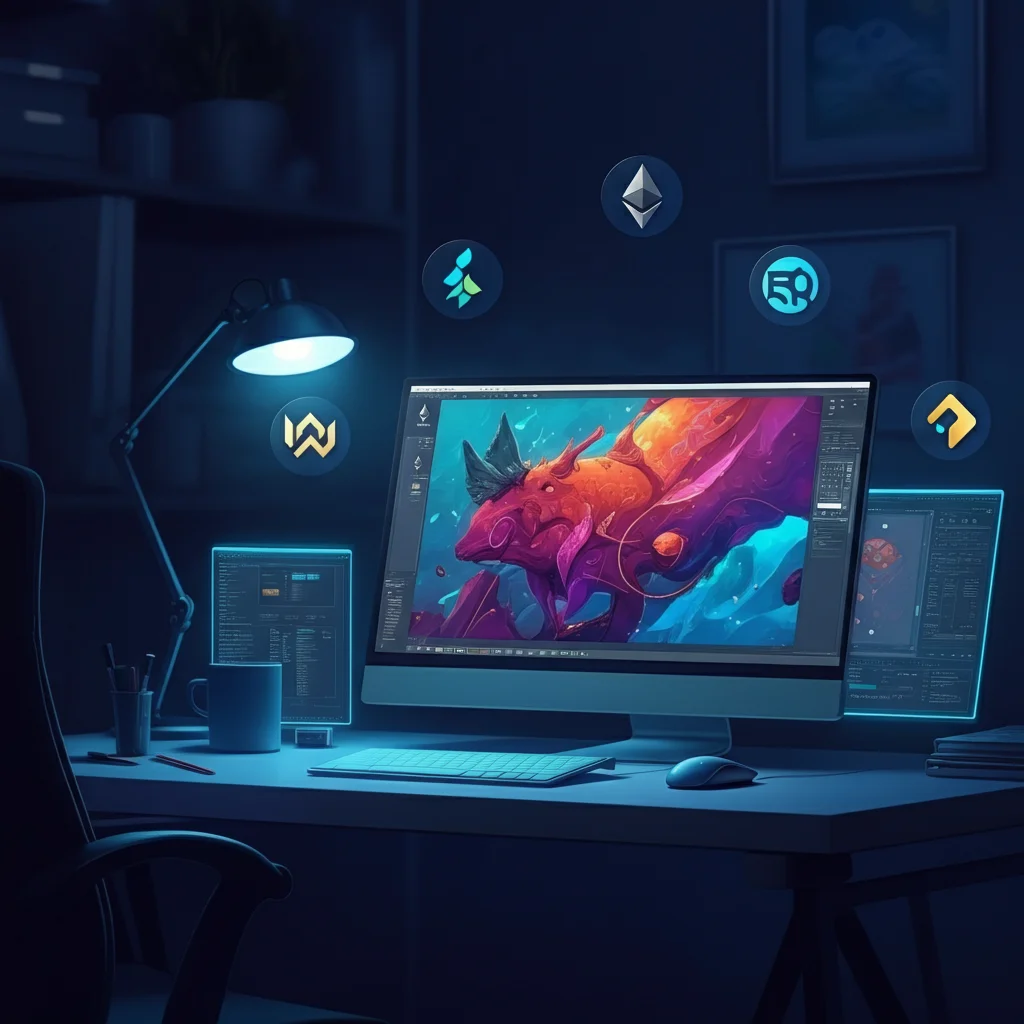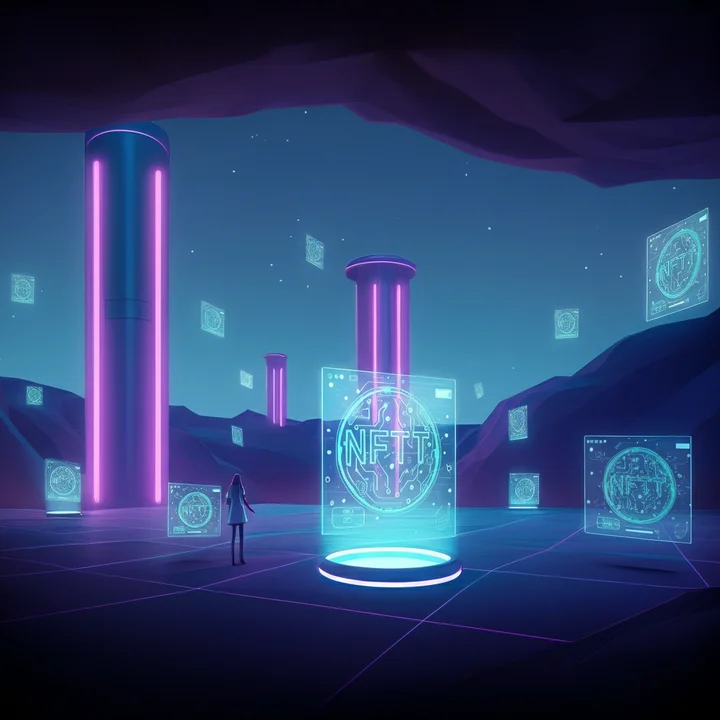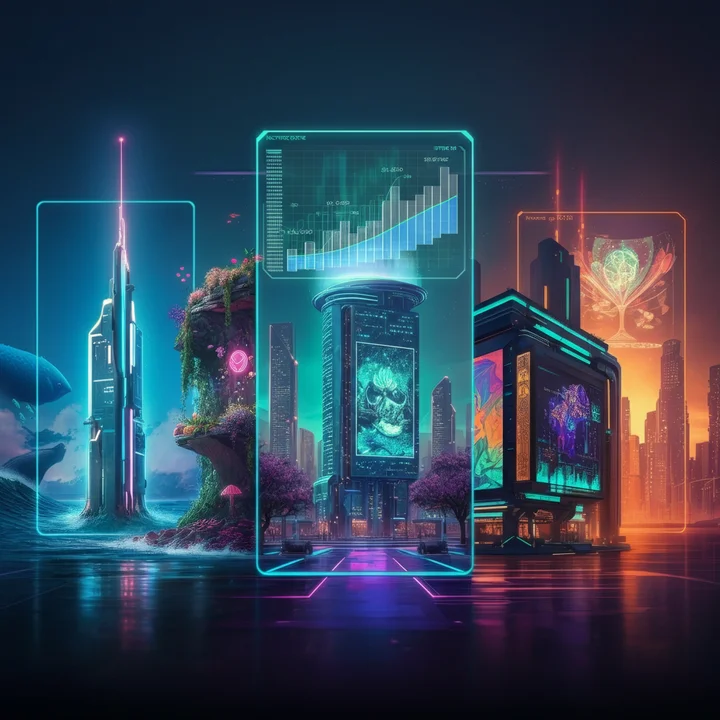Over the past few years, NFTs (non-fungible tokens) have taken the world by storm, revolutionizing the digital art and cryptocurrency spaces. From Beeple's $69 million NFT sale to unique collectibles being traded every day, NFTs are providing creators with new ways to monetize their skills. If you're intrigued by this space and wondering how you can create and sell your first NFT, you've come to the right place.
This step-by-step guide will walk you through everything—from setting up the basic tools to selling and managing your NFT. Let's get started!
Prerequisites for Creating and Selling NFTs
Before you can jump into the exciting world of NFTs, you need to prepare some essentials. Here's what you'll need:
1. Set Up a Crypto Wallet
To create and sell NFTs, you'll need a cryptocurrency wallet. This is where you'll store the cryptocurrency required to mint (create) your NFTs and pay any associated fees. Some of the most popular crypto wallets include:
MetaMask: A widely used wallet compatible with various NFT platforms and blockchains.
Coinbase Wallet: User-friendly and beginner-friendly, especially if you already use Coinbase.
Phantom: A great option for Solana-based blockchain users.
Once you've set up a wallet, purchase some cryptocurrency to cover minting and transaction costs. For Ethereum, you'll need ETH, while Solana requires SOL.
2. Choose a Blockchain
The blockchain you choose will affect which NFT platforms you can use and how your NFT will operate. Some popular blockchains for NFTs include:
Ethereum: The go-to blockchain for NFTs, offering robust infrastructure but higher gas (transaction) fees.
Solana: Faster transactions with lower fees, making it a strong competitor to Ethereum.
Polygon: A more scalable, cost-effective Ethereum-compatible chain.
Once you've settled on a blockchain, you're ready to move forward.
Step-by-Step Guide to Creating and Selling Your First NFT
Step 1. Create Your Digital Asset
Your NFT can be any digital asset, such as an image, illustration, video, audio file, or 3D model. Here are some tips for starting:
Use tools like Photoshop, Procreate, Canva, or Blender to design your asset.
Create something unique and meaningful. Successful NFTs often combine visual appeal with story or purpose.
Export the file in a common format like PNG, GIF, MP4, or MP3, depending on the type of asset.
If you're uncomfortable creating the digital asset yourself, you can collaborate with freelance artists using platforms such as Fiverr or Upwork.
Step 2. Select an NFT Platform
Once your asset is ready, you'll need an NFT marketplace where you can mint and sell it. Here are some of the most popular platforms:
OpenSea: The world's largest NFT marketplace that supports Ethereum and Polygon blockchains.
Rarible: Offers multi-chain support and lets artists retain creative control over their work.
Mintable: A beginner-friendly platform with options for gasless minting.
Research each platform's fees, ease of use, and audience to find your best fit.
Step 3. Mint Your NFT
Once you've chosen a marketplace, the next step is to mint your NFT. Minting is the process of turning your digital file into a unique NFT on the blockchain.
Upload your digital asset to the platform.
Fill in the details, such as the title, description, and properties of your NFT. For example, describe the inspiration behind your digital art and include any special features that make it one-of-a-kind.
Choose the blockchain you want to mint on. Platforms like OpenSea generally support multiple blockchains.
Once you've completed these steps, you'll be prompted to mint the NFT by signing a transaction using your wallet. This will attach your NFT to the blockchain.
Step 4. Set Royalties and List Your NFT
After minting your NFT, decide how much you'd like to earn as royalties for secondary market sales. Royalties ensure you receive a percentage (commonly 5–10%) every time your NFT is resold.
Next, set a price for your NFT. You can choose between:
Fixed Pricing: Like a traditional sale where buyers pay the listed price.
Auction: Buyers bid on your NFT, and you sell it to the highest bidder.
Once your preferences are set, click the "List" button to publish your NFT on the marketplace.
Step 5. Promote Your NFT
Creating an NFT is only part of the process. You'll also need to build demand for your digital asset. Here are some ways to effectively promote your NFT:
Leverage Social Media: Share your NFT on platforms like Twitter, Instagram, and TikTok. Use relevant hashtags (#nft, #cryptoart).
Join NFT Communities: Engage with enthusiasts on platforms like Discord, Reddit, or Clubhouse.
Offer Exclusives: Include bonuses such as downloadable content or exclusive perks for NFT buyers.
Storytelling is a big part of NFT culture, so don’t shy away from sharing the inspiration and process behind your work.
Step 6. Selling and Post-Sale Management
Once sold, you'll receive payment in your cryptocurrency wallet. Depending on your platform, you can either cash it out or reinvest it into future NFT projects.
While some buyers are collectors, others may look to resell your NFT. Consistently engaging with your audience and community improves your reputation and increases the value of your creations.
Costs to Consider Before Creating NFTs
Before jumping in, be aware of the costs involved in creating and selling NFTs. The most significant upfront cost is the gas fee, which covers the computational power required to mint your NFT or list it for sale.
On Ethereum, gas fees can range from $30 to $200 or more, depending on network activity. Blockchains like Solana and Polygon, however, offer much lower fees (often less than $1).
Additionally, some NFT platforms charge service fees or take a percentage of your sale, typically around 2.5–10%.
Legal and Copyright Considerations
Navigating the legal aspects is crucial when creating and selling NFTs:
Ownership and Copyrights: Minting an NFT doesn’t automatically grant buyers copyrights or usage rights to the underlying work. Be clear about what rights buyers are purchasing.
Plagiarism Risks: Ensure your work is original to avoid disputes or legal issues later.
Always include these details in your NFT’s description or terms of sale.
Unlock Your NFT Potential
Creating and selling NFTs might feel overwhelming, but with the tips and tools in this guide, you're well-equipped to take the leap. NFTs are not just about monetization; they’re an avenue for creative expression and building a community.
If you're ready to start, pick the blockchain and platform that suit your needs, and begin your NFT adventure. Happy minting!



